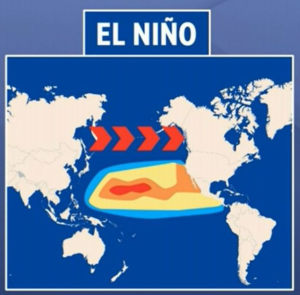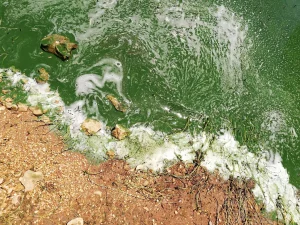What do citations look like?
All articles written on this website will follow the scientific notation for sources and citations, and especially the “Elsevier (with titles)” of the Harvard notation system. All citations in the text will be under the form:

Figure 1:Form of the citations in the text.
The form of the citations in scientific literature is always of the form as shown in Figure 1. The name of the first author is always written (here squared in red), followed by “et al.,” (squared in green) which means “and others” in Latin, to mean that not only the first author worked on this work. The date is also always mentioned and is important to check whether or not the study is recent.
But this information is not always enough to find the source and the original article. It is then important to check in the chapter “References” to find the complete source. An example corresponding to the complete source of Figure 1 is shown in Figure 2:

Figure 2: Form of the citations in the reference section.
This time, the complete name of the team who made the research is written (squared in red). The first author is generally the most important contributor, and the other names are written in the order of contribution. The last name, in Geochemistry and Earth sciences more generally, is the director of the team or the person who supervised and obtained the funds. In blue, squared, the date is also reported here. Then comes the complete title of the study, the name of the journal where it was published (squared in green, here Journal of Analytical Atomic Spectrometry), the number of the publication (here 36, without square), and finally the page numbers (in orange). Usually, a DOI (Digital Object Identifier) can also be provided. This is a unique identifier attributed to every scientific publication which permits to locate the document easily. It is under the form of a permanent web address (URL), here written and underlined in blue, as is the case for links.
How to access these citations?
Usually typing the DOI on the URL research of the web browser will give immediate access to the presentation page of the article, where the abstract and references will be displayed.
If the DOI is not given in the references, various search engines allow you to search specifically in scientific publications. Among them, the most used is probably google scholar. Typing the entire reference will bring up the desired study.
Unfortunately, most of the publications in scientific journals have to be paid to have access. The open-access journals are in the minority for the moment. However, the abstracts (short summaries of the study) and some other information are often free to access and can give an overview of the main results.
Fortunately, there are some alternatives to get these articles for those who cannot pay to read them. Although tolerated in most countries, these alternative sites are often the target of a trial from the main journal editors. Thus, these accesses can be limited via network providers, but it is important to note that the access to these websites and this scientific research in no way penalizes the researchers, who very often campaign for the sharing of knowledge with the most persons.







